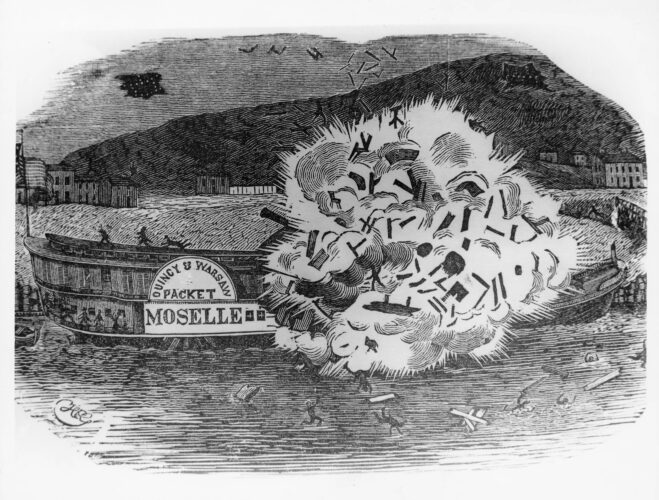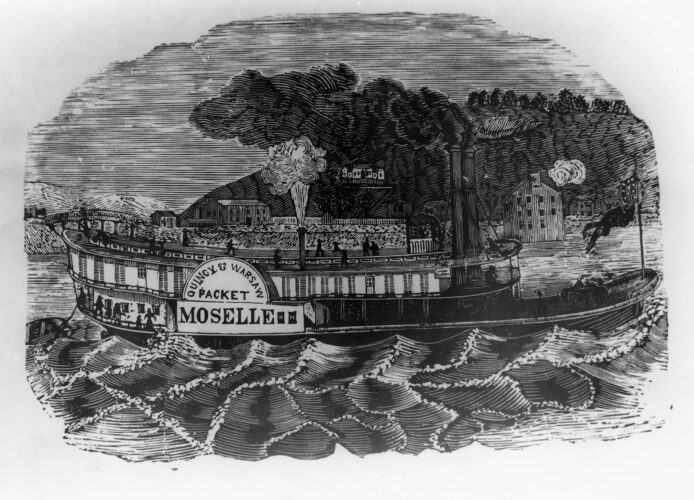The Steamboat Moselle Disaster

Construction of the Steamboat Moselle was completed at the Fulton Shipyards, just east of downtown Cincinnati, on March 31, 1838. The Moselle was one of the fastest steamboats of its time, and made record-setting runs along the Ohio and Mississippi rivers. On the evening of Wednesday, April 25, 1838, the Moselle set out from Cincinnati for Louisville and St. Louis, loaded with passengers and cargo. The boat made a brief stop about 1 mile up the river at Fulton to take on additional passengers. The ship’s captain and owner, Isaac Perrin, made the decision to keep the ship’s boilers at full steam during this stop. His intention was to impress onlookers on shore by speeding past the city and overtaking another boat that had left the dock slightly ahead of the Moselle—this proved to be a fatal error. When the Moselle was approximately 30 feet from the shore, all four boilers experienced catastrophic failure and exploded, destroying much of the ship and killing many aboard.

Some aboard the boat, including the Captain Perin, were killed in the initial blast. According to those who witnessed the event, the portion of the boat that was not destroyed in the initial explosion continued to drift down the Ohio River for another 15 minutes before sinking completely. There were few other boats in the vicinity at the time of the explosion, but efforts were made to pull survivors from the water.
At the time of the explosion there were 85 cabin passengers, approximately 120 deck passengers (largely German and Irish emigrants), and 30 officers and crew aboard the Moselle. Estimates for the number of victims killed in the accident range from 85 to 150 individuals. Many considered it to be the worst steamboat accident up to that point. The blast left debris and bodies scattered in the water and across the shoreline. One newspaper reported that among the pieces of debris that damaged local businesses was a 300-pound piece of one of the exploded boilers.

Some good did come from the tragedy, however. The Moselle disaster was not the first time a ship’s boiler had exploded resulting in the loss of lives. In response to these disasters, Congress passed the Act of 1838, which required regular safety inspections for steamboats. This was one of the first times the federal government had imposed regulations on private industry in the United States.
Thank you to Katy Scullin, Ohio Memory Program Coordinator at the Ohio History Connection, for this week’s post!



Leave a Reply
You must be logged in to post a comment.